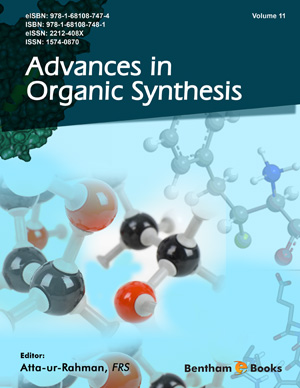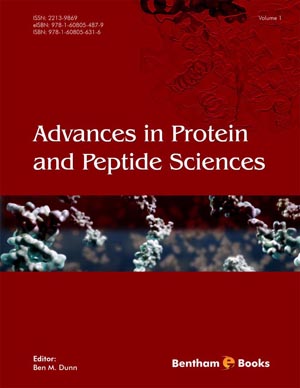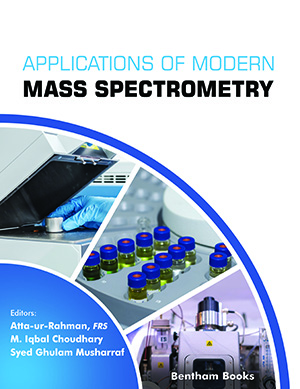Book Volume 11
Recent Progress on Asymmetric Synthesis of Chiral Flavanones, Chromanones, and Chromenes
Page: 1-42 (42)
Author: Ling Meng and Jun (Joelle) Wang
DOI: 10.2174/9781681087474118110003
PDF Price: $30
Abstract
Flavonoids are privileged structural motifs in numerous natural products and pharmaceutical molecules, which show many biological activities such as antitumor, antioxidant, antibacterial and anti-inflammatory properties. Flavanone and chromanone which feature a chiral center are subgroups of flavonoids. The structures of flavanone and chromanone are distinct from that of flavone and chromone by a reduction of C2- C3 double bond. Deoxygenation of flavanones and chromanones provides chromenes which are also important structural motifs present in a number of natural and synthetic products that exhibit a wide range of biological activities. Besides naturally occurring flavanones, chromanone, and chromenes, the benzopyran scaffold is an important intermediate and interesting building block in organic synthesis and design of new lead compounds in drug discovery. Consequently, many attention has been paid to their efficient synthesis, especially in enantiopure forms, and many asymmetric methods for the construction of the chiral flavanone, chromanone and chromene skeletons were reported in recent years.
Supramolecular Chemistry of Modified Amino Acids and Short Peptides
Page: 43-107 (65)
Author: Joanna Bojarska, Krzysztof Kaczmarek, Janusz Zabrocki and Wojciech M. Wolf
DOI: 10.2174/9781681087474118110004
Abstract
Supramolecular synthesis is a perfect complementary to molecular synthesis in order to create supramolecular assemblies which would not be available by the use of covalent bonds only. The beauty of this advanced synthesis lies in a spontaneous reaction via noncovalent intercontacts, offering endless possibilities, without outside help. Recently, short peptides have attracted an increasing interest due to their advantages and applications, inter alia supramolecular biofunctional materials, in drug delivery, cancer therapy or immunology. Amino acids, simple building blocks in living systems whose architecture is controlled by a plethora of intermolecular interactions, have a valuable input in understanding highly complex biological systems and processes. Subtle supramolecular intercontacts in precise co-operation just like virtuosos play a symphony of life. So, the design of smart bio-inspired materials should be based on the knowledge of intercontacts at a molecular and higher topological level. Nevertheless, information on this subject is very scarce. This chapter is a brief review focused on supramolecular chemistry of short peptides in relation to laboratory synthesis and more comprehensive reaction mechanisms. It summarizes the latest scientific findings scattered across the world literature, the most perspective ways of synthesis and takes a holistic look at the supramolecular landscape in the context of subtle supramolecular effects via modern both experimental and theoretical methods. Special attention is paid to the supramolecular H-bond synthon concept, which evolves in various research areas in an intriguing manner. Synthon methodology is as important in supramolecular chemistry as the reaction mechanism in traditional synthesis. For the synthetic chemists, synthons involving relevant intercontacts are invaluable in the synthetic strategy of self-assembly. We hope that this publication highlighting an innovative approach will contribute to the development of short peptide-based supramolecular chemistry.
The Use of Nanocatalysts in the Synthesis of Heterocycles: A Contemporary Approach
Page: 108-155 (48)
Author: Sharoni Gupta, Chetna Ameta, Kiran Meghwal, Rakshit Ameta and Pinki B. Punjabi
DOI: 10.2174/9781681087474118110005
PDF Price: $30
Abstract
Nanocatalysis is the latest development in the field of synthetic chemistry that has revolutionized the process of chemical transformation. The nanocatalysts offer several advantages as compared to conventional catalyst such as simple and inexpensive methods of preparation, high surface to volume ratio, large number of active sites, high selectivity, enhanced stability, easy recovery and recyclability. In recent years, the nanomaterials have been widely used in the synthesis of heterocylic moieties. The chapter aims to highlight the role of diverse nanocatalysts in the synthesis of various five-, six- and seven- membered heterocycles. An update on catalytic efficiencies of various nanocatalyts such as magnetic nanocatalysts, nanomixed metal oxides, core-shell nanocatalysts, nano-supported catalysts and graphene-based nanocatalysts for the synthesis of heterocycles have been incorporated in this chapter.
Synthesis and Applications of 1,2,3-Triazoles
Page: 156-232 (77)
Author: Elzbieta Wojaczynska and Jacek Wojaczynski
DOI: 10.2174/9781681087474118110006
PDF Price: $30
Abstract
The chapter is devoted to the recent developments in the synthesis of 1,2,3- triazoles and their selected applications. Since the introduction of a classic Huisgen reaction which involved thermal 1,3-dipolar cycloaddition of alkynes to azides, its catalytic modifications have been elaborated, allowing the regioselective preparation of 1,4- and 1,5-disubstituted derivatives in copper(I)- or ruthenium(II)-catalyzed cyclizations (click reactions). Most of the other synthetic pathways generally also utilize organic azides or sodium azide, although methods based on other starting materials (e.g. hydrazine derivatives) are also of importance. A special attention is paid to the preparation of chiral triazole derivatives. Various applications of triazoles are also discussed, with a focus on their use as isosteres of biological functionalities, sensors for ions and neutral molecules, in catalysis and in construction of supramolecular assemblies.
Ring C–H Functionalization of Aromatic N-Oxides
Page: 233-295 (63)
Author: Rafał Loska
DOI: 10.2174/9781681087474118110007
PDF Price: $30
Abstract
Aromatic N-oxides occupy a central place in the synthesis of azine and azole derivatives. Unique reactivity of N-oxides makes them versatile substrates for introduction of various functional groups into the heterocyclic ring. The area of direct functionalization of C(sp2)–H bonds of aromatic N-oxides with various carbon and heteroatom substituents has seen renewed interest in recent years, resulting in introduction of several modern, versatile synthetic protocols into the arsenal of methods available within the chemistry of nitrogen heteroaromatic compounds. The aim of this review article is to provide an overview of these recent developments, together with an appropriate background in more classical N-oxide chemistry. It focuses on the most important reaction types characteristic for aromatic N-oxides, rather than the type of heterocyclic ring involved.
Introduction
Advances in Organic Synthesis is a book series devoted to the latest advances in synthetic approaches towards challenging structures. The series presents comprehensive reviews written by eminent authorities on different synthetic approaches to selected target molecules and new methods developed to achieve specific synthetic transformations or optimal product yields. Advances in Organic Synthesis is essential for all organic chemists in academia and the industry who wish to keep abreast of rapid and important developments in the field. This volume presents the following reviews: o Recent Progress on Asymmetric Synthesis of Chiral Flavanones, Chromanones, and Chromenes o Supramolecular Chemistry of Modified Amino Acids and Short Peptides o The Use of Nanocatalysts in the Synthesis of Heterocycles: A Contemporary Approach o Synthesis and Applications of 1,2,3-Triazoles o Ring C–H Functionalization of Aromatic N-Oxides






















